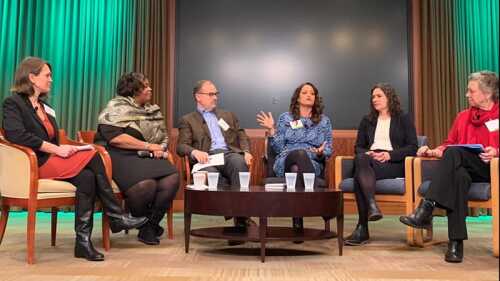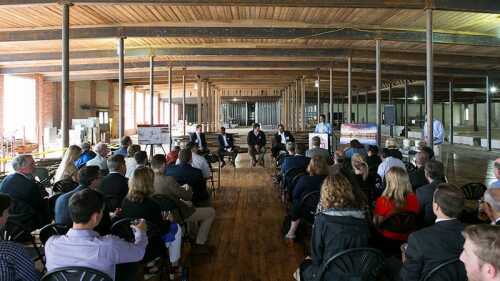Innovation Districts & Corridors
An area in Cincinnati comprising portions of a highway, the central business district, and the central riverfront along the Ohio River has been selected as the study site for the annual ULI Hines Student Competition. Though based on a hypothetical situation, the ideas competition provides both full- and part-time graduate-level students the opportunity to devise a comprehensive design and development program for an actual large-scale urban site.
Stakeholders who have worked to push for more affordable housing know firsthand that it can often be a contentious issue. But what if there were a way to avoid strategies that “backfire” and instead leverage more effective messaging to build public will and get people excited about providing high-quality housing for everyone? Advocates for more affordable housing described what methods are working for them, including the recent zoning changes in Minneapolis, at a recent ULI Minnesota event.
As part of a wide-ranging panel on adapting development to new technologies, held at the ULI Japan Fall Conference in Tokyo in November, industry leaders discussed using e-commerce data to drive development decisions, adapting Japan’s traditional banking sector for the future, and creating a more innovative startup culture.
Best-selling author, entrepreneur, and New York University marketing professor Scott Galloway issued an impassioned call for the government breakup of Facebook, Amazon, Google, and Apple, telling attendees at the 2018 ULI Fall Meeting that the four giants of the digital-age economy have grown too large and powerful.
Austin-based Kasita wants to hit the developer market with small, precision-built turnkey homes.
Implementing strategies at the building, development, and community levels can preserve functionality despite extreme weather.
The following ten projects—all built during the past five years—showcase a variety of design strategies that make inventive use of their project budgets, including a textile mill adapted to serve as apartments and supportive housing for military veterans.
The population of urban neighborhoods in many metropolitan areas is growing as quickly or nearly as quickly as that of suburban neighborhoods, reflecting ongoing consumer demand—particularly among younger households—for walkable living environments that are convenient to jobs, transit, and urban amenities, according to new research published by ULI and RCLCO.
At a ULI Triangle event in April, representatives of North Carolina’s Capitol Broadcasting Company shared the firm’s plans to redevelop a historic cotton mill, ultimately shifting the fortunes of the town of Rocky Mount.
Nestled in a relatively quiet East Amsterdam neighborhood, a new kind of hotel has been racking up occupancy rates topping 90 percent for the past two years. Zoku is a modern take on the extended-stay hotel, where the visitors stay in fully outfitted micro-hotel rooms of 260 or 320 square feet (24 or 30 sq m) and relax and connect in the common areas on the top floor.








